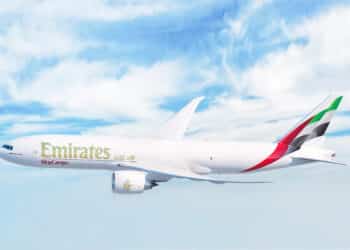Just how many freighters will China need in 2036?

Looking ahead, China is expected to be one of the most promising markets for freighter aircraft, as the country’s rapidly-growing middle class continues to drive demand for high-value commodities which move by air. In parallel, the government’s outwardly-focused ‘Belt and Road’ initiative encourage domestic carriers to establish new routes, which in turn translates into demand for freighter aircraft. But just how many freighters will this market need?
Predictions vary, but according to a forecast released by the Aviation Industry Corporation of China (AVIC), China’s civil aviation cargo fleet will reach 748 units by 2036. This would be quite a jump from September 2017, when carriers based in mainland operated 148 freighter aircraft (according to Cargo Facts’ database). With a net addition of nearly 600 aircraft over the next two-decades, this translates to an annual growth rate of about 9% for Chinese freighter fleets.
Although the report did not break down freighters by size-category, it hinted that the number of both widebody and regional freighters fleets will grow rapidly. AVIC has high hopes for regional freighters as the manufacturer of the MA60F (see a new small freighter from China) which competes with other air frames in the same size category, such as the ATR 72 and the Dash 8-Q400.
Cargo Facts believes that the success of regional freighters in China will require the opening up of civil air space, and a reduction in airport congestion. Neither are immediately apparent, but this could change in the coming years. Another variable that is difficult to measure is the viability of high-speed rail for regional express transport. No other region has been able to use rail for such purposes on a large scale, but multiple pilot projects exist throughout China.
AVIC’s forecast is bullish compared to existing forecasts, such as the most recent version of Boeing’s Current Market Outlook released at this year’s Paris Air Show. It is important to note however, that the Boeing’s CMO omits regional freighters, as the smallest size category included are standard-body conversions.
Boeing expects Asia Pacific-based carriers will need 320 production freighters and 630 conversions over the next two-decades, and that 38% of all freighter deliveries over the next twenty years, will be to airlines based in the Asia pacific region.
Carriers based in China are expected to take delivery of most of these freighters. Although Boeing does not provide an estimate for the number of freighter conversions Chinese carriers will need, it forecasts 57% of deliveries for production freighters in the region, some 180 units, will end up in Chinese fleets. We can expect an even higher proportion of freighter conversions redelivered to carriers based in the Asia Pacific region over the next twenty years to end up in the fleets of Chinese carriers.
Neither forecast breaks down freighter demand by carrier type — express, all-cargo, combination carrier. Based on historical orders from Chinese carriers, however, we expect the majority of freighter deliveries to end up in the fleets of express carriers. At present, none of China’s express carriers operate new-build freighters, but, as finances improve post-IPO, and as networks expand to include routes which enable higher aircraft utilization, this could change. Chinese combination carriers, meanwhile, have in recent times favored new-build freighters.




